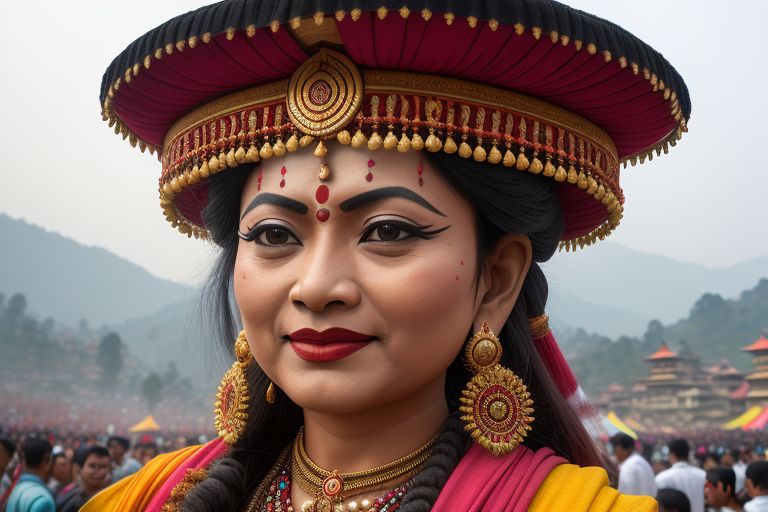Today the city of Kathmandu Valley was filled with the joys of the first day of one of the largest most colourful festivals in Nepal, Indra Jatra.
This festival which starts from the eighth month of the Nepali calendar and last for eight days is celebrated after the ending of monsoon in honor of Indra, the Hindu god of rain started with the installation of a wooden pillar called Yosin or Indradhoj Linga in Hanumandhoka in Basantapur Durbar Square.
Being a typical Newar cultural festival thousand of devotees and the observer had assembled at the core of Kathmandu to witness the ceremonial erection of the pole. It was accompanied with the deafening echoes of folk music and the jazzy rhythms of dancing folk costumes which set amazing backdrop for the cultural show which both residents of the country and foreign visitors were able to appreciate.
During the occasion, the chariot of Kumari, the living goddess was taken through the major roads of Kathmandu in a colourful parade. A young girl was idolized as Holy Taleju and as her ”chariot” was being drawn by the participants with devotion she showered her blessings on the audience.
This procession is an important part of Indra Jatra and it’s considered as the symbol of the existence of the gods among the population of Kathmandu; which is why it is considered that if the deity enters the city, it brings good luck to it.
Throughout the day, masked dancers known as Lakhey were seen moving from one place to the other dancing in the street while some danced using complicated steps that held lots of symbolism, accompanied by rfeel beats of traditional drums. These are considered not only as performances of various gods and goddesses and/or demons but also have a strong religious and cultural meaning for the Newars.
That was also done during the festival during which the gigantic figure of the Sky God Akash Bhairab was placed at Indra Chowk. People worshipped this magnificent god and brought lots of some kind of sacrifices, asking for luck and shield.
When darkness set in the helpless palace structures and shrines found within and around Kathmandu Durbar Square was lighted with the oil lamps, literally rejuvenating the prehistoric attractions. The use of these lamps is not only to beautify the light, but they are religious, representing the driving out of darkness/ignorance.
The President and the Prime Minister joined the celebrations which showed the level of presupposition of this cultural event in the governmental level. Their presence at these ceremonies also sparked an appreciation of how these ceremonies fit into each of the societies’ identities in Nepal.
All the local authorities have been charged with extra security responsibilities in order to make sure that the festival runs as planned; some of these include deployment of policemen in sensitive places. Other measures that have been taken include speeding up traffic diversions to be able to deal with crowds expected in the coming days.
The celebration of Indra Jatra also ushers in the festival time in Nepal as there are other few big events in the nearing months. This interval is very important for the local economy, especially for the companies operating in the sphere of hospitality and tourism industry waiting for increased activity.
Thus, the first day of Indra Jatra ends and night in the city of Kathmandu many people are already looking forward to the further symmetric dynamics and enjoyment of the next days. Hence, the festival is not only an evidence of rich culture of Nepalese people but also of togetherness of people belonging to so many diversities and for the same cause and beliefs.


